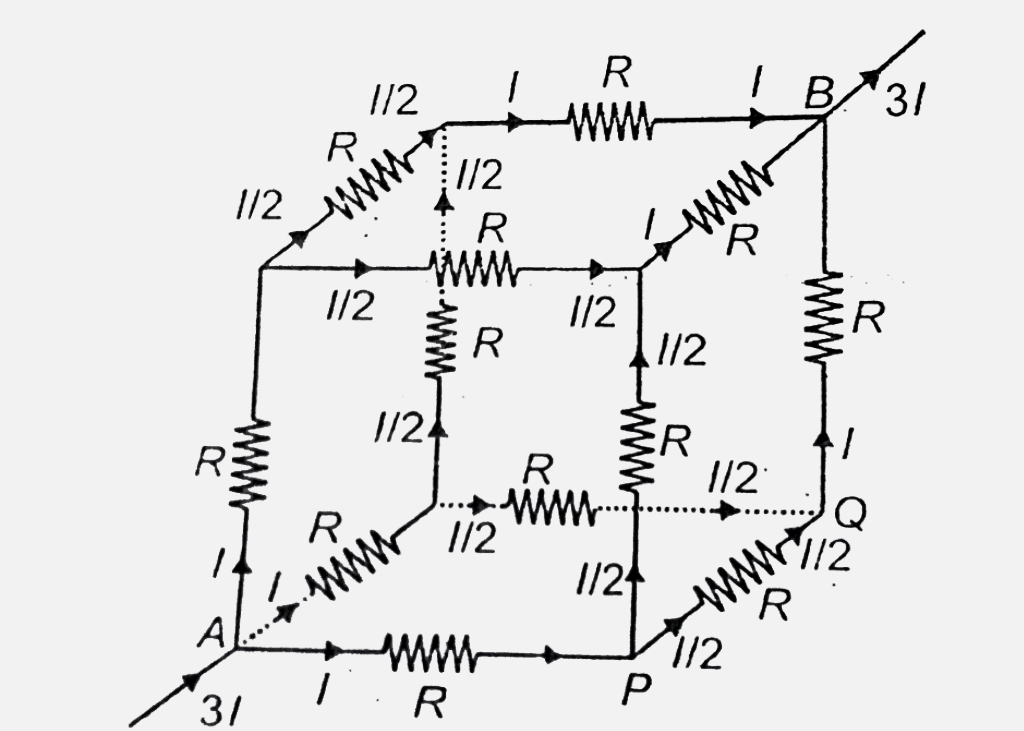
Tweve identical resistance each of resistance R are joined to form a cube as shown in figure.
Find resistance of the combination across AB
This circuit cannot be solved by considering series and parallel connections.
All three paths from A to B are identical . Let 3l current entered at end A and left at B. Current is distributed in all branches using symmetry.
If VA−VB=V, then RAB=V3l ....(i)
We have
VA−VB=(VA−VP)+(VP−VQ)+(VQ−VB)
⇒V=IR+l2R+IR
⇒V=5IR2
⇒Vl=5R2
⇒RAB=V3l=5R6
Topper's Solved these Questions
- BOOK - AAKASH INSTITUTECHAPTER - CURRENT ELECTRICITYEXERCISE - Try Yourself32videos
CURRENT ELECTRICITY
- BOOK - AAKASH INSTITUTECHAPTER - CURRENT ELECTRICITYEXERCISE - ASSIGNMENT(SECTION-A(OBJECTIVE TYPE QUESTIONS))59videos
CURRENT ELECTRICITY
- BOOK - AAKASH INSTITUTECHAPTER - COMMUNICATION SYSTEMS EXERCISE - ASSIGNMENT SECTION D (Assertion-Reason)10videos
COMMUNICATION SYSTEMS
- BOOK - AAKASH INSTITUTECHAPTER - DUAL NATURE OF RADIATION AND MATTER EXERCISE - ASSIGNMENT (SECTION-D)10videos
DUAL NATURE OF RADIATION AND MATTER
Similar Questions
Twelve wire, each having resistance r, are joined to form a cube as shown in figure.Find the equivalent resistance between the end of a face diagonal such as aandc.
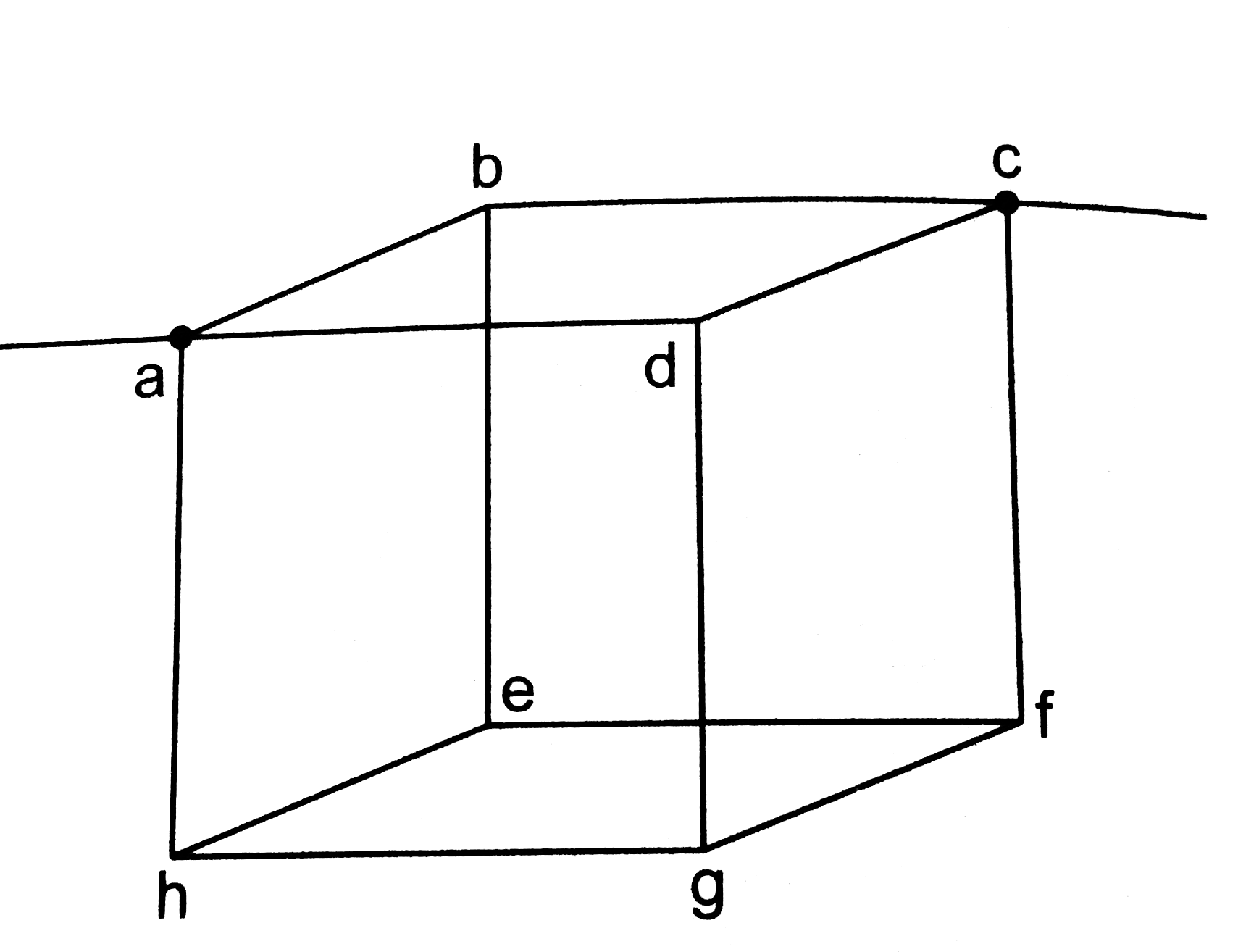 View Solution
View SolutionIdentical resistance of resistance R are connected as in figure then find out net resistance between x and y.
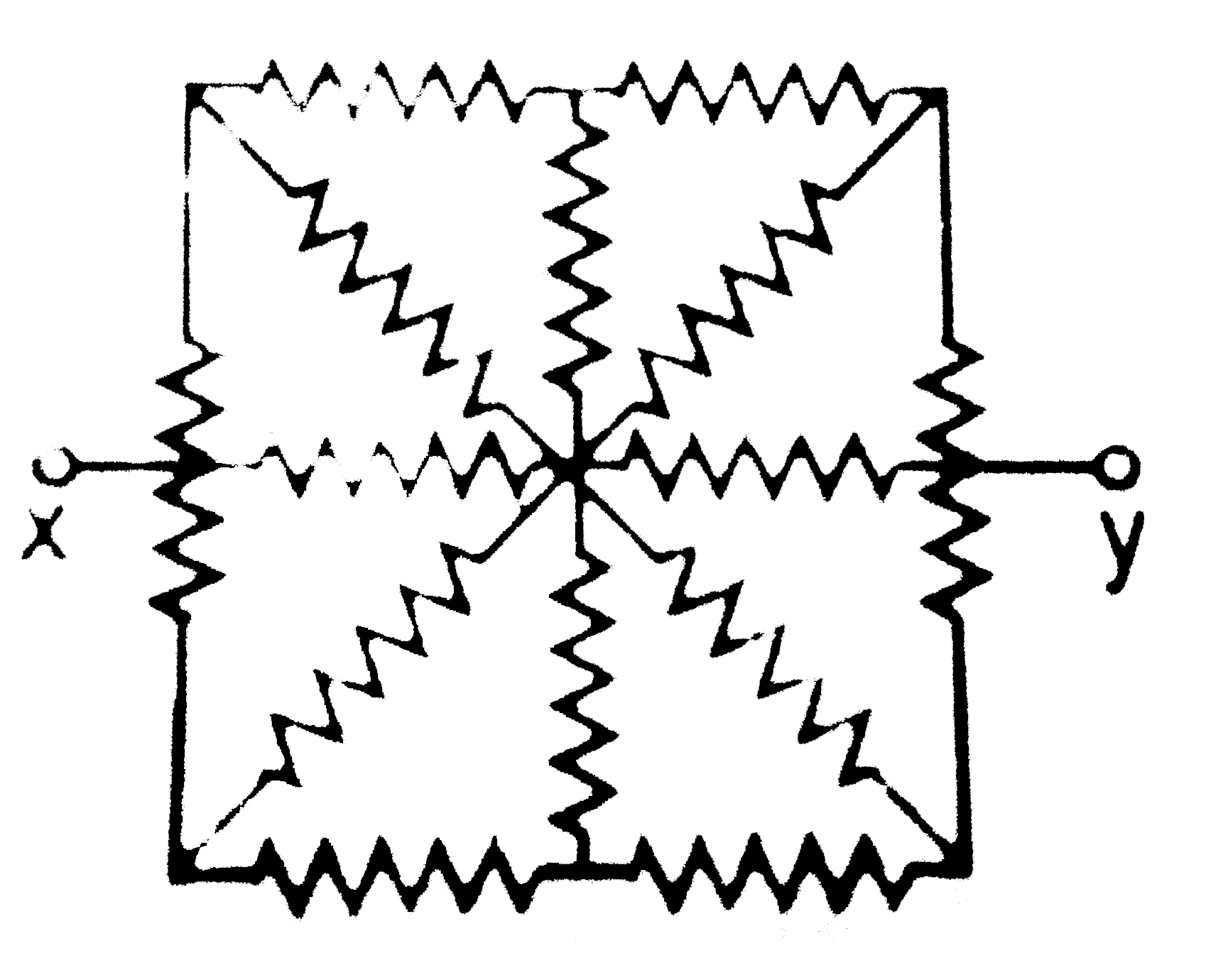 View Solution
View Solution
Knowledge Check
- Question 1 - Select One
The equivalent resistance of the combination across AB is .
 A(3+√174)B3+√17C3+√172D2(3+√17)
A(3+√174)B3+√17C3+√172D2(3+√17) - Question 2 - Select One or More
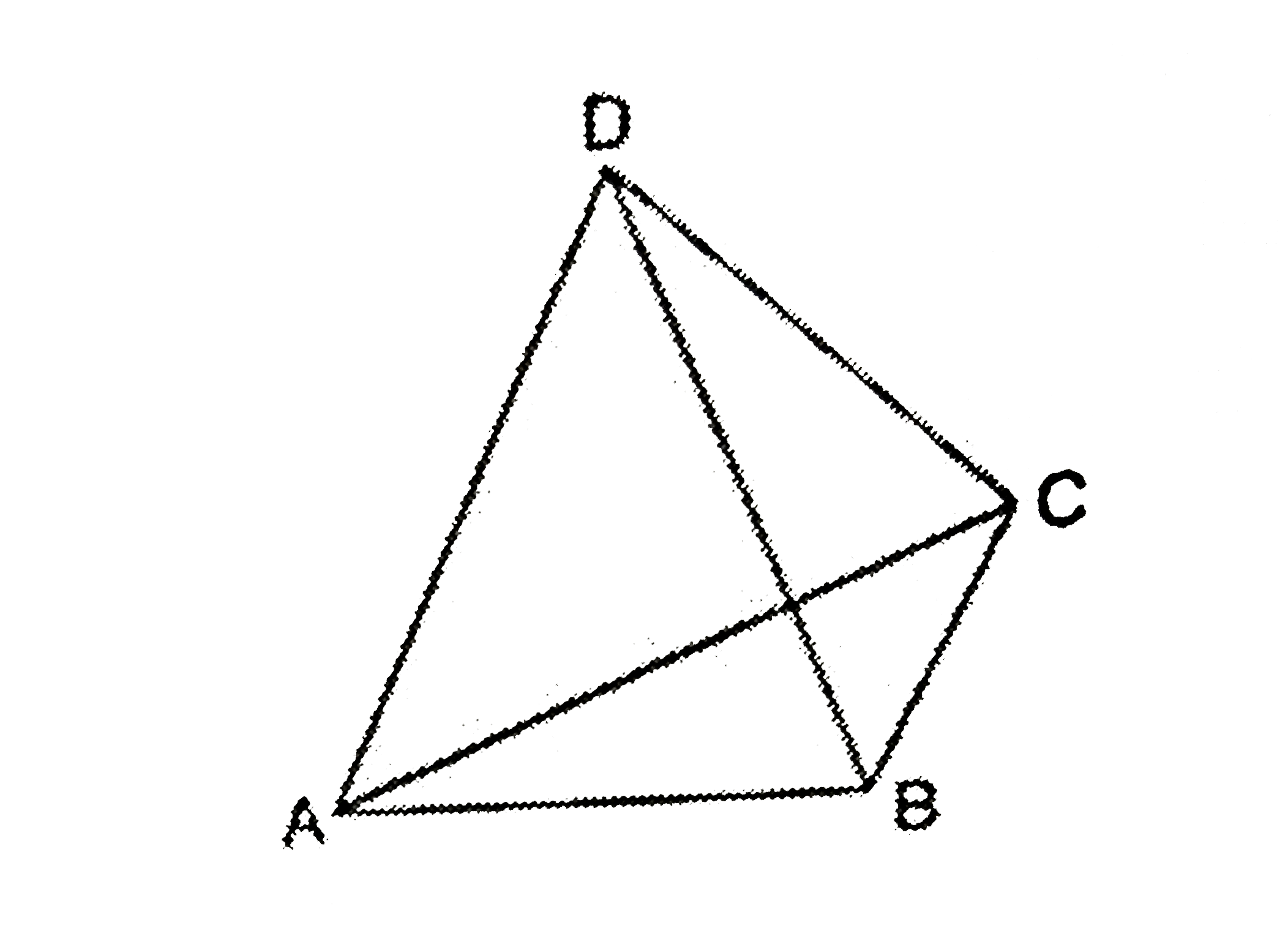
Six identical wires of resistance R each are joined to form a pyramid, as shown in the figure aboveAThe equivalent resistance between any two corners will depend on the choice of cornersBThe equivalent resistance between A and B is R/2CThe equivalent resistance between D and C is zeroDIf an electric current enters at A and flows out at B, no current will pass through DC. - Question 3 - Select One
Three equal resistances each of value R are joined as shown in the figure. The equivalent resistance between M and N is
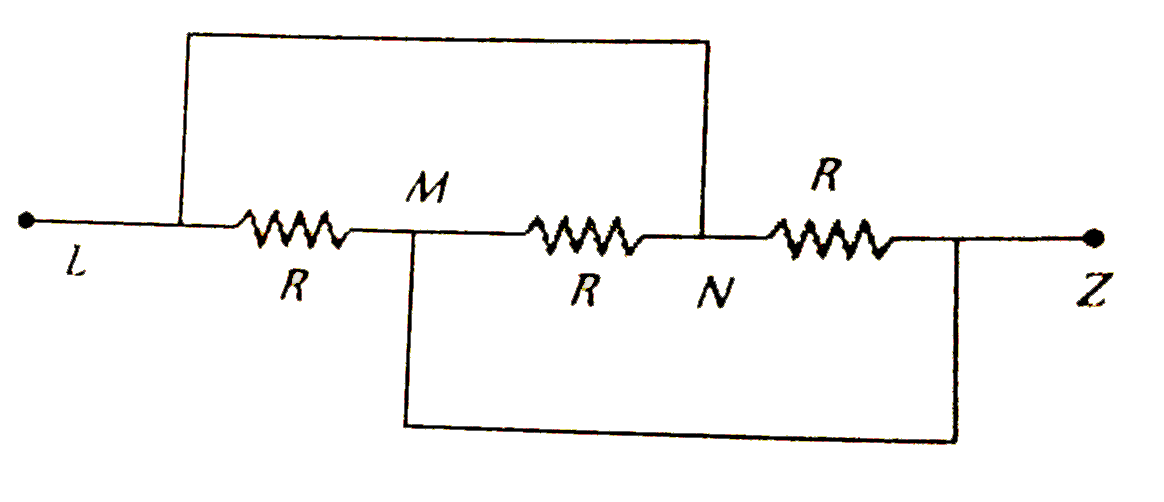 ARB2RCR2DR3
ARB2RCR2DR3
Idnetical resistor each of resistance r are connected as shown in figure. Calculate equivalent resistance between A and E.
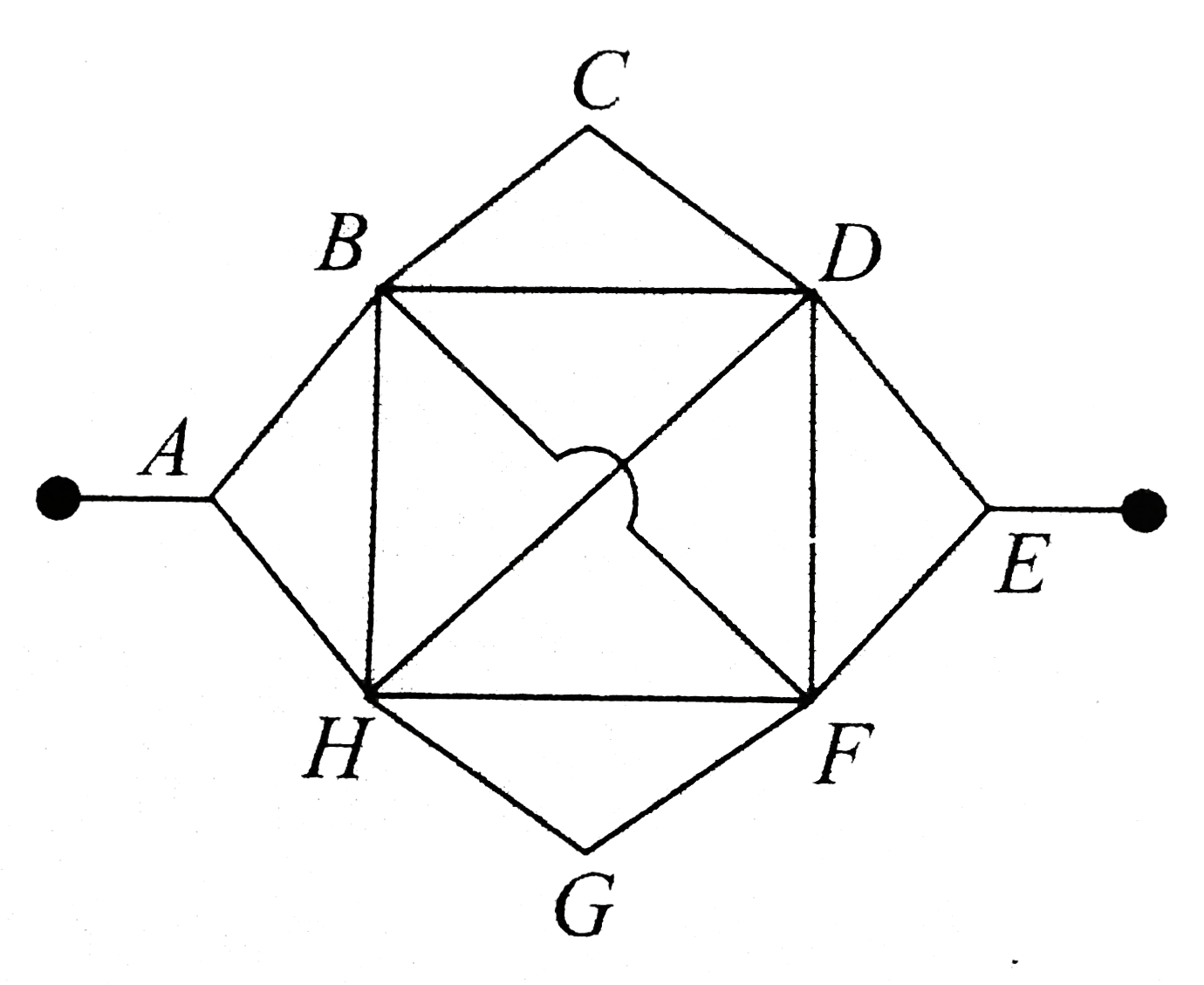 View Solution
View SolutionTwelve wire, each having equal resistance r, are joined to form a cube as shown in figure.Find the equivalent resistance between the diagonally opposite points a and f.
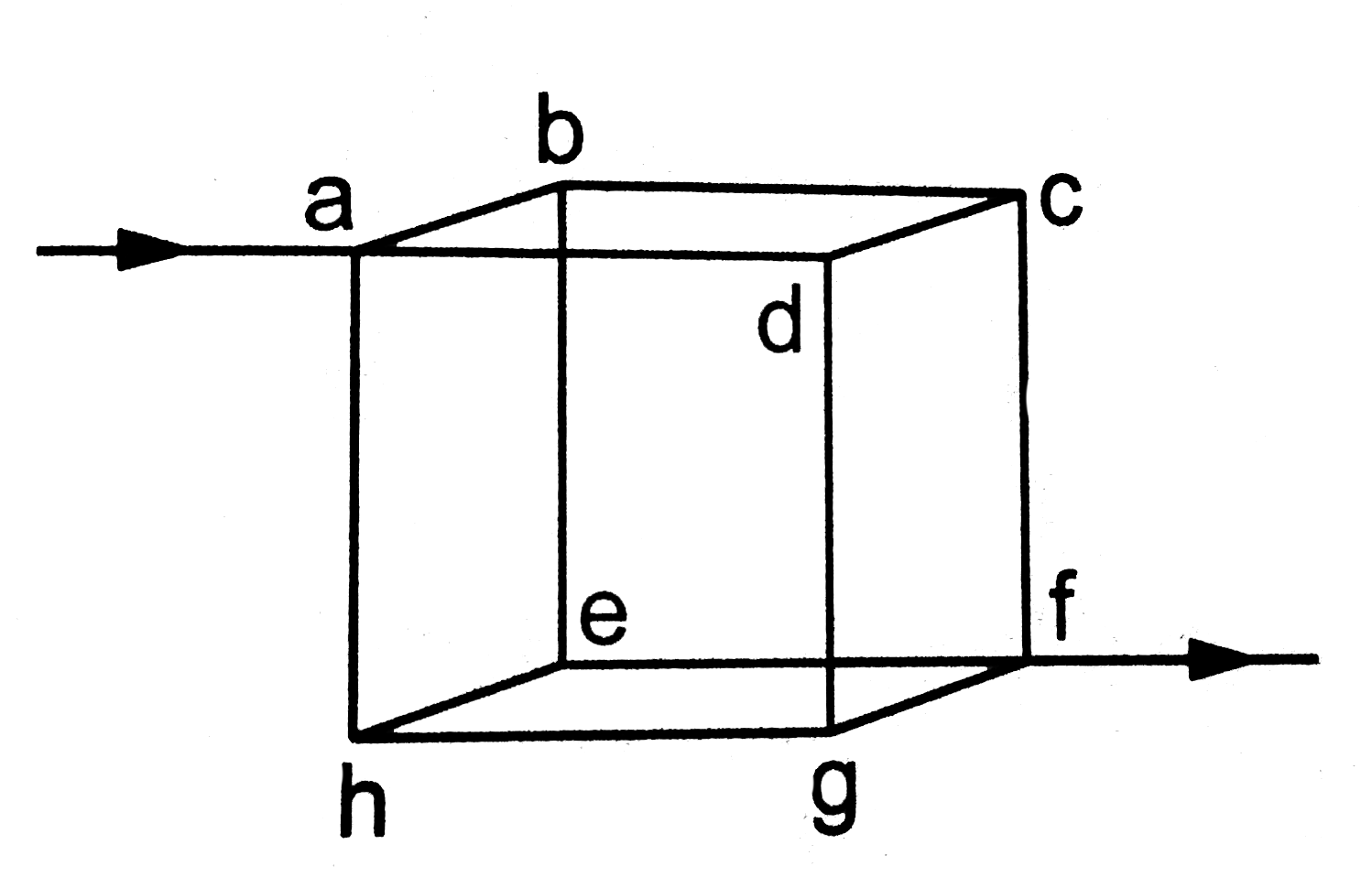 View Solution
View SolutionTwelve identical wires each of resistance 6Ω are joined to from a skeleton cube. Find the resistance between the current of the same edge of the cube
View SolutionNine wires each of resistance are connected to make a prism as shown in figure. Find the equivalent resistance of the arrangement across
a.AD b. AB
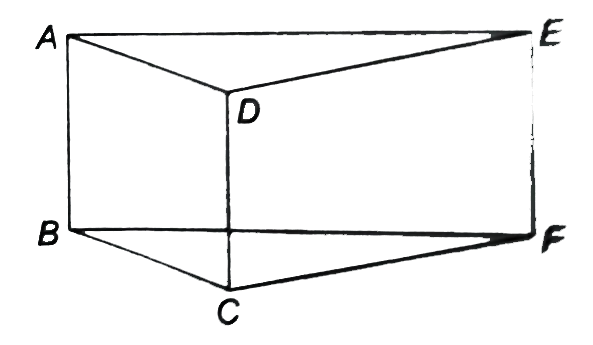 View Solution
View SolutionSix equal resistances, each 1Ω, are joined to form a network as shown in fig. Then the resistance between any two corners is
 View Solution
View Solution

